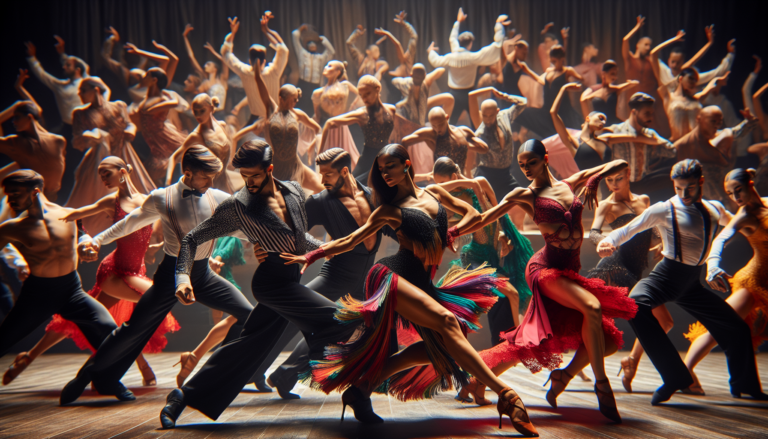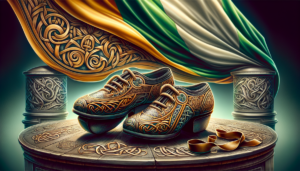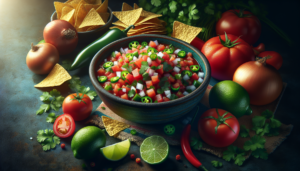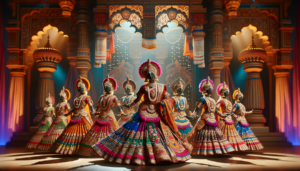Paso Doble is a captivating and dramatic dance that has captured the hearts of audiences worldwide. With its roots in Spanish culture and its association with bullfighting, Paso Doble is a dance that exudes passion, intensity, and flair. In this comprehensive guide, we will explore the origins, characteristics, and significance of Paso Doble, as well as its impact on popular culture and tips for learning and performing this mesmerizing dance.
Introduction to Paso Doble
What is Paso Doble?
Paso Doble, which translates to “double step” in Spanish, is a dramatic and theatrical dance that originated in Spain. It is often associated with bullfighting, as the dance movements and postures mimic the actions of a matador and a bull in the bullring. Paso Doble is characterized by its sharp, staccato movements, powerful strides, and intense expressions, all of which contribute to its captivating appeal.
The dance is typically performed by a couple, with the male dancer taking on the role of the matador and the female dancer representing either the bull or the matador’s cape. The dancers move in perfect synchronization, executing precise footwork, dramatic poses, and fluid arm movements that showcase the strength, agility, and passion of the bullfight.
Origins and History of Paso Doble
The history of Paso Doble can be traced back to the early 20th century in Spain. The dance evolved from the music played during bullfights, particularly the “pasodoble” music genre, which means “double step” in Spanish. This lively and dramatic music, often featuring brass instruments and percussion, was used to accompany the entrance of the matadors into the bullring.
As the popularity of bullfighting grew in Spain, so did the popularity of the Paso Doble music and dance. The dance began to take shape as a stylized representation of the bullfight, with dancers adopting the roles of the matador and the bull. Over time, Paso Doble spread beyond the bullring and became a popular dance in social settings, such as dance halls and ballrooms.
The Paso Doble gained international recognition in the early 20th century when it was introduced to France and later to other parts of Europe and the Americas. It became a staple in ballroom dance competitions and continues to captivate audiences with its dramatic flair and powerful expressions.
Characteristics of Paso Doble
Dance Movements and Techniques
Paso Doble is known for its sharp, staccato movements and powerful strides. The dance is performed with a strong, upright posture, with the chest lifted and the head held high. The male dancer, taking on the role of the matador, leads the dance with confidence and authority, while the female dancer, representing the bull or the matador’s cape, follows his lead with grace and precision.
Some of the key Paso Doble movements include:
- Appel: A sharp, stamping movement of the foot, often used to accent the music and create a sense of drama.
- Chasse Cape: A movement where the dancers move side by side, with the male dancer leading and the female dancer following, mimicking the movement of the matador’s cape.
- Promenade: A walking movement where the dancers move around the dance floor, showcasing their posture and flair.
- Separation: A movement where the dancers separate and face each other, often with the male dancer performing flourishes and the female dancer executing spins or turns.
These movements, along with intricate footwork and expressive arm gestures, come together to create the dramatic and captivating Paso Doble dance.
Music and Rhythm
Paso Doble is performed to a specific type of music, also known as “pasodoble.” This music is characterized by its lively, march-like rhythm and its dramatic, bold instrumentation. Paso Doble music often features brass instruments, such as trumpets and trombones, as well as percussion instruments like drums and castanets.
The Paso Doble rhythm is typically in 2/4 time, with a strong emphasis on the first beat of each measure. The music builds in intensity throughout the dance, with crescendos and accents that punctuate the dramatic movements of the dancers. Some of the most famous Paso Doble compositions include “España cañí” by Pascual Marquina Narro and “El Gato Montés” by Manuel Penella.
The music and rhythm play a crucial role in setting the mood and energy of the Paso Doble dance. The powerful and dramatic music helps to create an atmosphere of intensity and passion, allowing the dancers to fully embody the spirit of the bullfight.
Paso Doble in Popular Culture
Paso Doble on Strictly Come Dancing
Paso Doble has gained significant popularity through its appearances on various television dance competitions, particularly on the British television show “Strictly Come Dancing.” This popular program features celebrity contestants paired with professional dancers, competing in different ballroom and Latin dance styles each week.
Paso Doble is one of the most anticipated and dramatic dances on “Strictly Come Dancing.” The celebrities and their professional partners often deliver powerful and captivating Paso Doble performances that showcase the intensity and flair of the dance. These performances have helped to introduce Paso Doble to a wider audience and have contributed to its growing popularity outside of traditional ballroom dance circles.
Notable Performances: Susanna Reid and Kevin Clifton
One of the most memorable Paso Doble performances on “Strictly Come Dancing” was delivered by journalist and presenter Susanna Reid and her professional partner Kevin Clifton in 2013. Their electrifying Paso Doble, set to the music of “Los Toreadors” from Georges Bizet’s opera “Carmen,” received widespread acclaim from the judges and the audience.
Susanna Reid’s powerful and expressive performance, combined with Kevin Clifton’s expert choreography and guidance, created a Paso Doble that was both technically impressive and emotionally captivating. Their performance showcased the drama, intensity, and artistry of the dance, leaving a lasting impression on viewers and solidifying Paso Doble’s place as a highlight of the competition.
The Susanna Reid and Kevin Clifton Paso Doble performance has since been viewed millions of times online, with audiences continuing to marvel at the skill, passion, and chemistry displayed by the pair. It remains a testament to the enduring appeal and impact of Paso Doble in popular culture.
Learning and Performing Paso Doble
Tips for Beginners
If you’re interested in learning Paso Doble, here are some tips to help you get started:
- Start with the basics: Before diving into the complex movements and techniques of Paso Doble, focus on mastering the fundamental steps and rhythms. Learn the proper posture, foot placement, and timing to build a solid foundation.
- Find a qualified instructor: Learning Paso Doble from a skilled and experienced dance instructor can make a significant difference in your progress and technique. Look for instructors who specialize in Latin or ballroom dance and have a proven track record of teaching Paso Doble.
- Practice regularly: Consistent practice is key to improving your Paso Doble skills. Set aside dedicated time to work on your technique, footwork, and expression. Regular practice will help you develop muscle memory, strength, and confidence in your movements.
- Pay attention to detail: Paso Doble is a dance that relies heavily on precision and attention to detail. Focus on executing each movement with clarity, sharpness, and control. Pay attention to your posture, arm placement, and facial expressions to fully embody the character and spirit of the dance.
- Embrace the drama: Paso Doble is a highly dramatic and expressive dance. Don’t be afraid to let your personality and emotions shine through in your performance. Embrace the intensity, passion, and theatricality of the dance to create a compelling and engaging experience for yourself and your audience.
Remember, learning Paso Doble takes time, patience, and dedication. Don’t be discouraged if progress feels slow at first. With consistent effort and guidance from a skilled instructor, you can develop the skills and confidence to perform this captivating dance.
Advanced Techniques
For dancers looking to take their Paso Doble skills to the next level, here are some advanced techniques to consider:
- Mastering the cape work: The movement and manipulation of the matador’s cape is a key element of Paso Doble. Advanced dancers focus on perfecting their cape work, using fluid and precise arm movements to create a sense of drama and flair. Practice different cape techniques, such as the “veronica” and the “finta,” to add depth and variety to your performance.
- Incorporating complex footwork: Advanced Paso Doble dancers showcase their skills through intricate and challenging footwork. Experiment with different heel and toe combinations, quick turns, and sharp, staccato steps to create a sense of power and intensity. Practice these complex footwork patterns slowly at first, gradually building up speed and precision.
- Developing strong partner connection: Paso Doble is a dance that relies heavily on the connection and synchronization between partners. Advanced dancers work on developing a strong and intuitive connection, allowing them to move as one unit. Focus on clear lead and follow techniques, as well as non-verbal communication through body language and eye contact.
- Exploring different interpretations: While Paso Doble has a specific structure and character, advanced dancers can explore different interpretations and styles within the dance. Experiment with variations in tempo, musicality, and expression to create a unique and personal Paso Doble performance. Draw inspiration from different sources, such as traditional Spanish culture, contemporary dance, or your own artistic vision.
- Refining performance skills: Advanced Paso Doble dancers pay close attention to their overall performance skills. This includes perfecting their posture, maintaining a strong and commanding presence, and developing a deep connection with the music and the audience. Work on your stagecraft, facial expressions, and the ability to convey a range of emotions through your dancing.
As you continue to develop your Paso Doble skills, remember to challenge yourself, seek feedback from experienced dancers and instructors, and always strive for growth and improvement. With dedication and passion, you can achieve a high level of mastery in this captivating and powerful dance.
Conclusion
Paso Doble is a dance that captures the essence of passion, drama, and intensity. From its origins in the Spanish bullring to its current popularity in ballroom dance competitions and popular culture, Paso Doble continues to captivate audiences with its powerful movements, striking visuals, and emotional depth.
Whether you are a beginner looking to learn the basics of Paso Doble or an advanced dancer seeking to refine your skills, this guide provides a comprehensive overview of the dance, its history, and its significance. By understanding the characteristics, techniques, and cultural context of Paso Doble, you can develop a deeper appreciation for this art form and unlock your own potential as a Paso Doble dancer.
So, embrace the passion, feel the rhythm, and let the dramatic world of Paso Doble transport you to a place of intensity, artistry, and self-expression. With dedication and practice, you too can experience the thrill and satisfaction of mastering this captivating dance.






